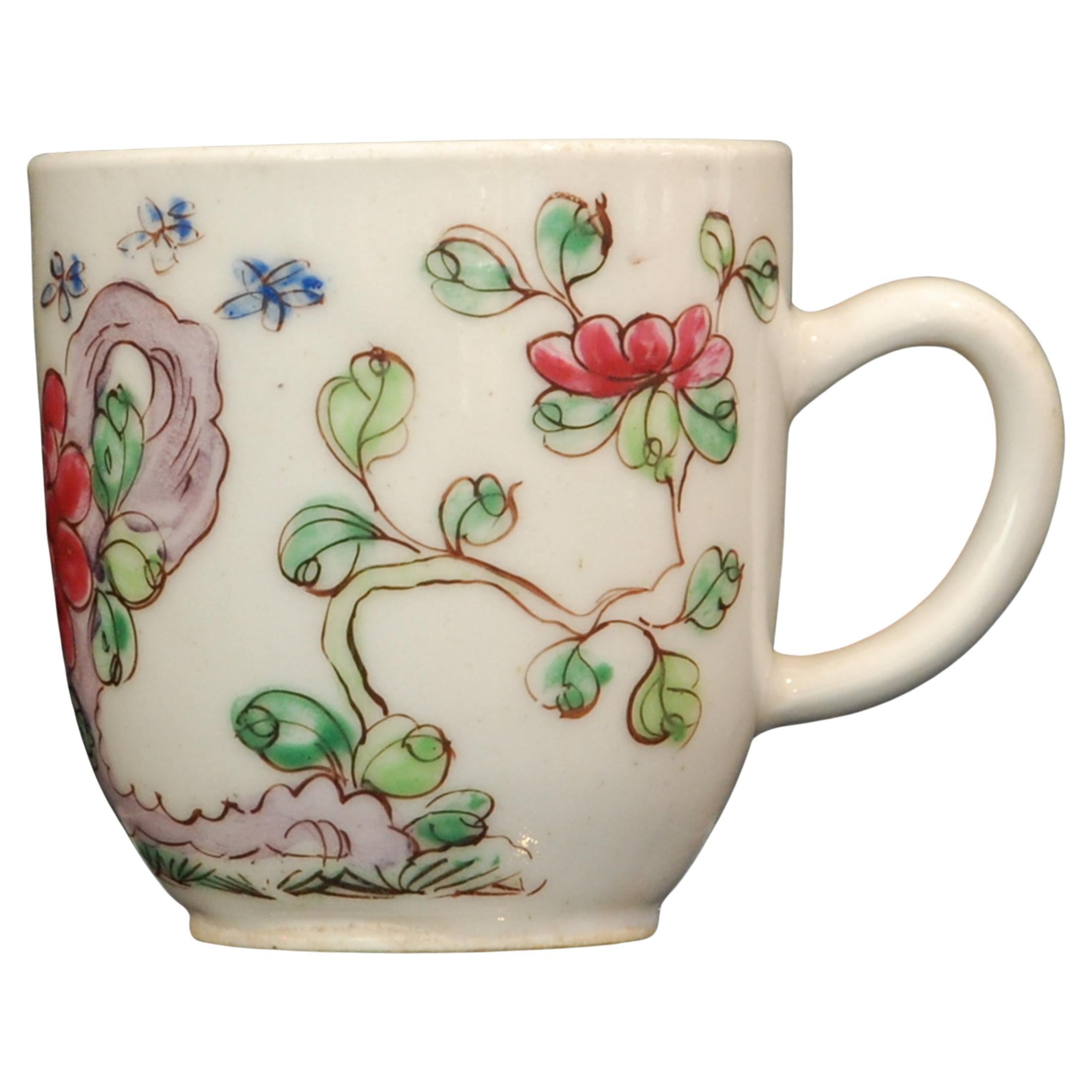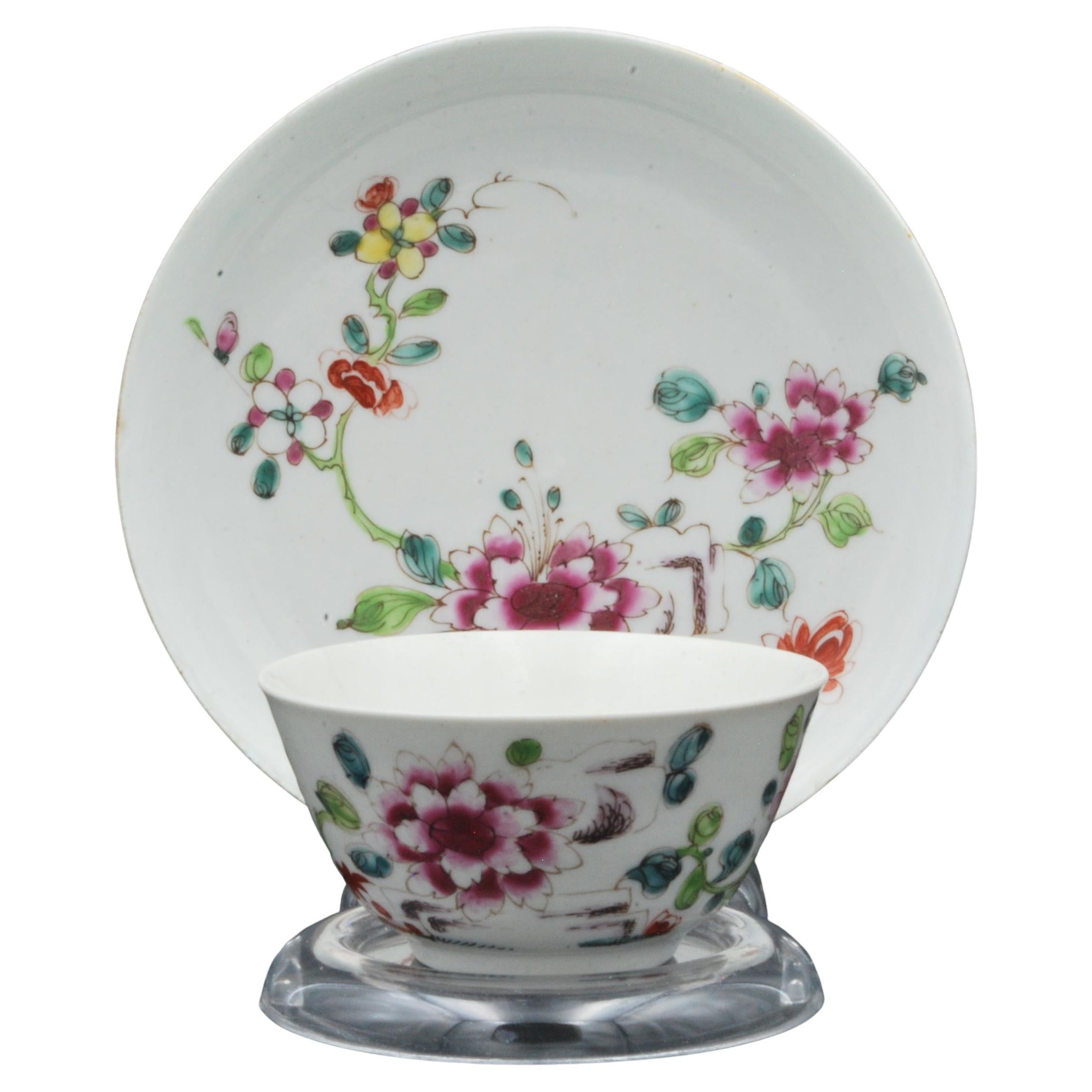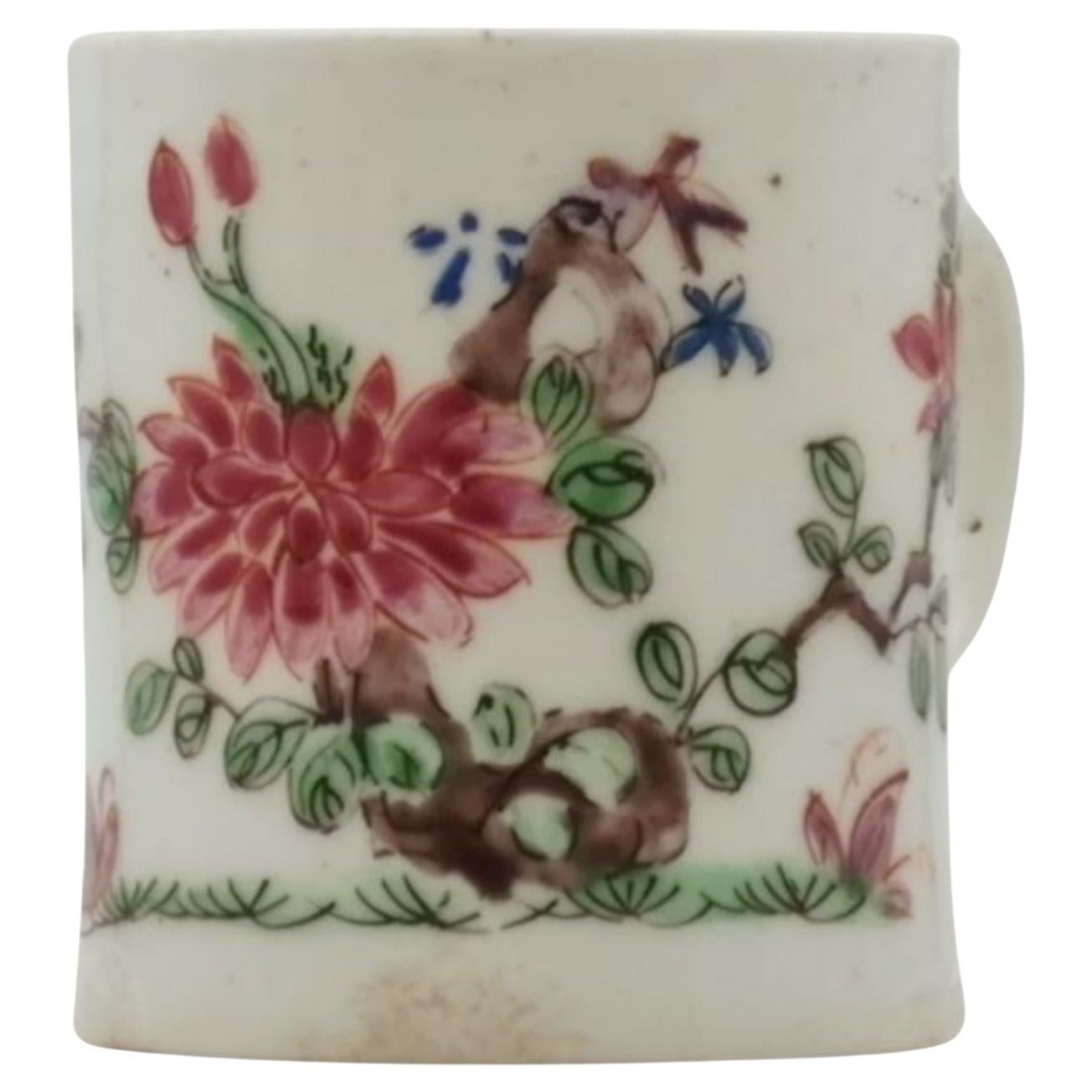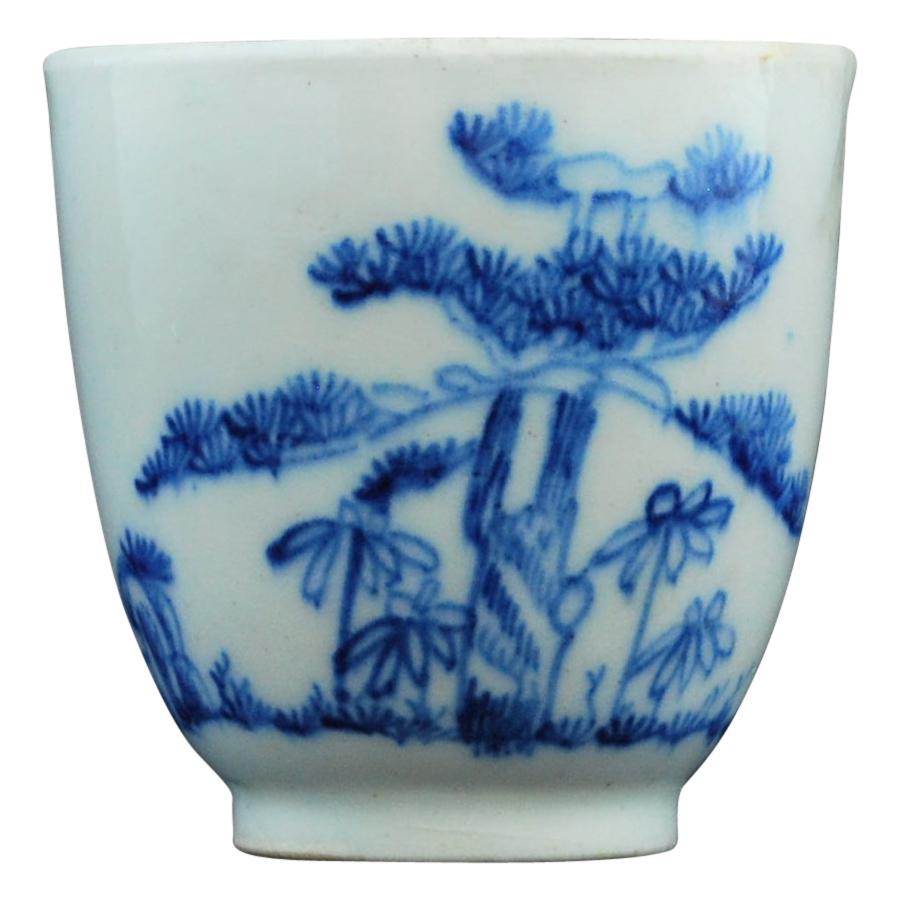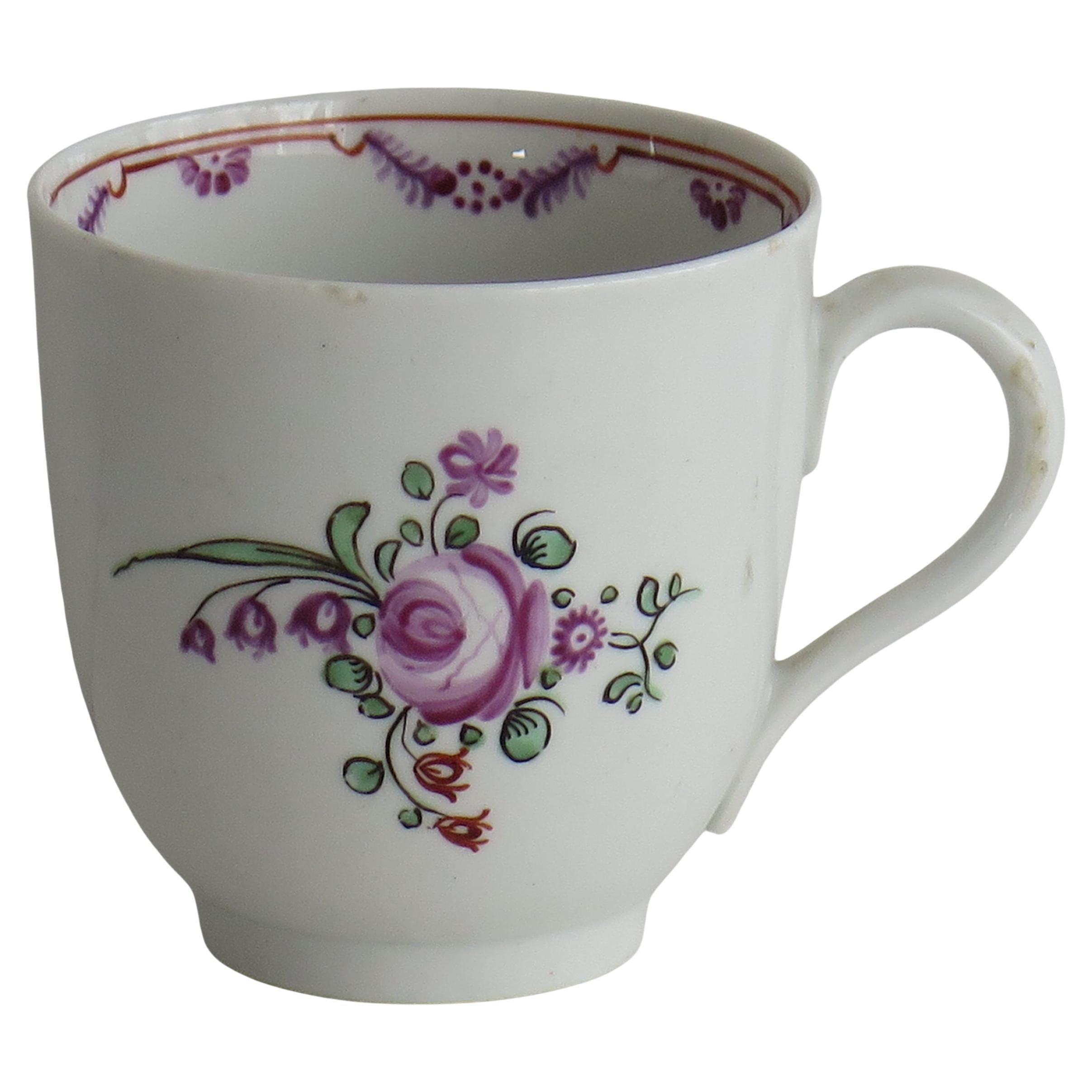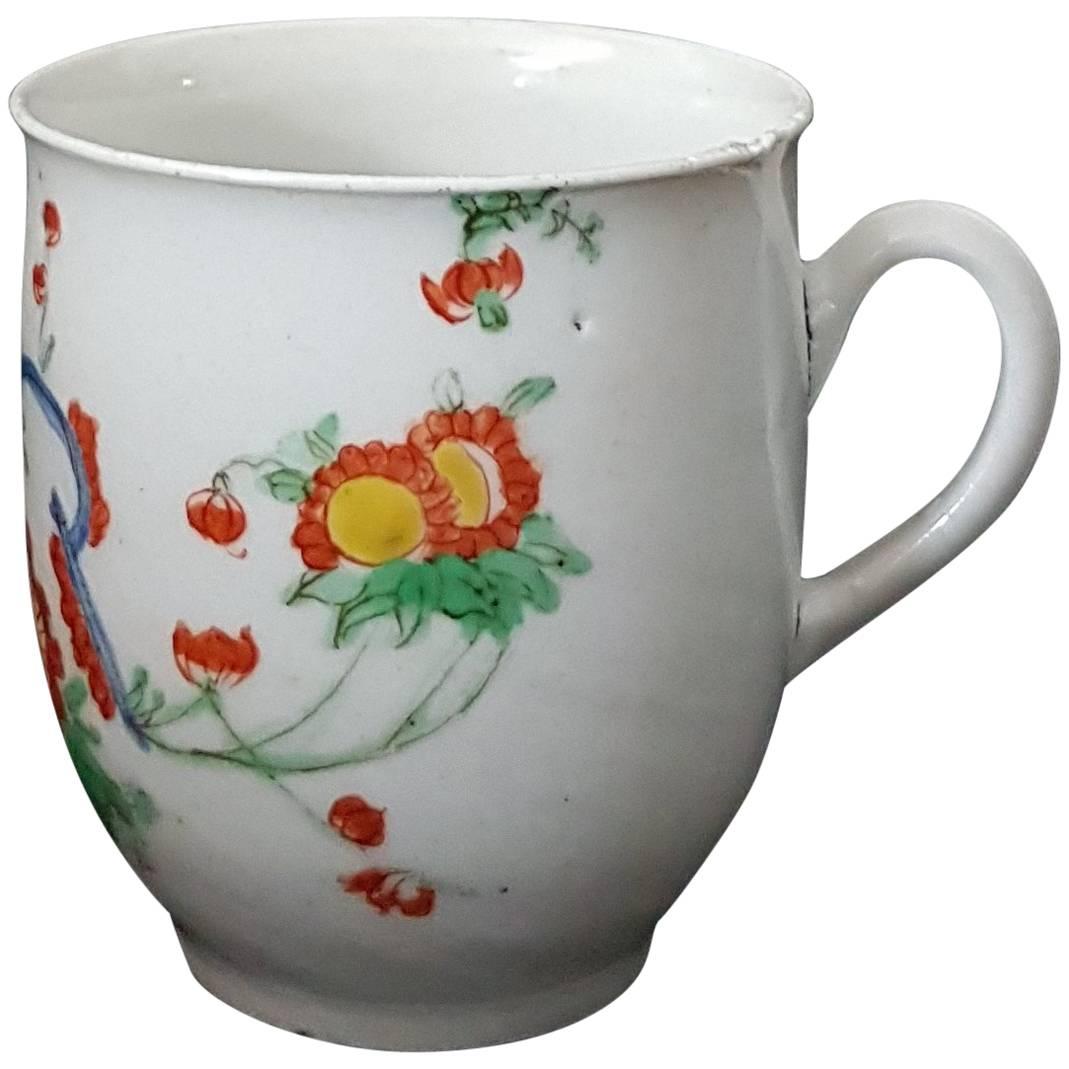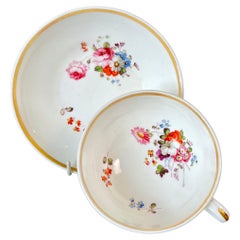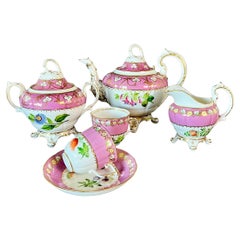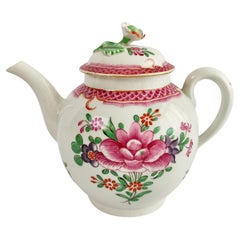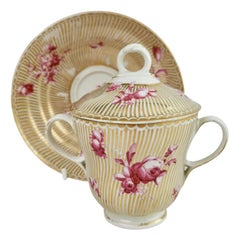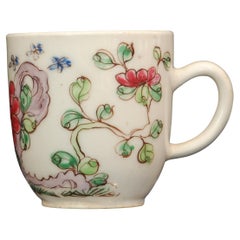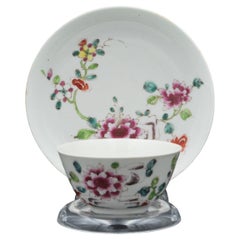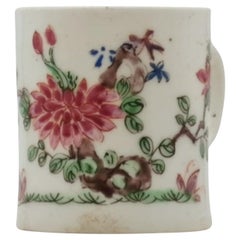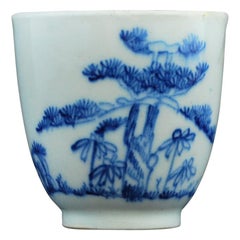Items Similar to Bow Porcelain Orphaned Coffee Cup, Famille Rose Peony, circa 1755
Want more images or videos?
Request additional images or videos from the seller
1 of 16
Bow Porcelain Orphaned Coffee Cup, Famille Rose Peony, circa 1755
$472
$59020% Off
£358.40
£44820% Off
€409.86
€512.3220% Off
CA$659.45
CA$824.3220% Off
A$733.46
A$916.8220% Off
CHF 382.99
CHF 478.7320% Off
MX$8,925.37
MX$11,156.7120% Off
NOK 4,891.33
NOK 6,114.1720% Off
SEK 4,587.21
SEK 5,734.0120% Off
DKK 3,058.93
DKK 3,823.6620% Off
Shipping
Retrieving quote...The 1stDibs Promise:
Authenticity Guarantee,
Money-Back Guarantee,
24-Hour Cancellation
About the Item
This is a very charming orphaned coffee cup made by the Bow Porcelain factory in about 1755. The cup is decorated in a Chinese "famille rose" peony pattern. This cup would have been part of a large tea service, and the tiny size shows how expensive coffee was in the 18th Century.
The Bow Porcelain Factory was one of the first potteries in Britain to make soft paste porcelain, and most probably the very first to use bone ash, which later got perfected by Josiah Spode to what is now the universally used "bone china". Bow was the main competitor of the Chelsea Porcelain Factory, but where Chelsea made very fine slipcast porcelain, Bow made a different soft paste porcelain that tended to be softer and could be pressed into moulds. Bow served a larger public generally at lower prices. The factory was only in operation between 1743 and 1774, after which the tradition got incorporated into some of the later famous potteries such as Worcester and Derby.
The cup is unmarked, which is normal for Bow items of this era.
Condition report the cup is in excellent condition without any damage or repairs. There are various glazing imperfections, which are quite normal for porcelain of this era.
Antique British porcelain is never perfect. Kilns were fired on coal in the 1800s, and this meant that china from that period can have some firing specks from flying particles. British makers were also known for their experimentation, and sometimes this resulted in technically imperfect results. Due to the shrinkage in the kiln, items can have small firing lines or develop crazing over time, which should not be seen as damage but as an imperfection of the maker's recipes, probably unknown at the time of making. Items have often been used for many years and can have normal signs of wear, and gilt can have signs of slight disintegration even if never handled. I will reflect any damage, repairs, obvious stress marks, crazing or heavy wear in the item description but some minor scratches, nicks, stains and gilt disintegration can be normal for vintage items and need to be taken into account.
There is widespread confusion on the internet about the difference between chips and nicks, or hairlines and cracks. I will reflect any damage as truthfully as I can, i.e. a nick is a tiny bit of damage smaller than 1mm and a chip is something you can easily see with the eye; a glazing line is a break in the glazing only; hairline is extremely tight and/or superficial and not picked up by the finger; and a crack is obvious both to the eye and the finger. Etcetera - I try to be as accurate as I can and please feel free to ask questions or request more detailed pictures!
Dimensions 5.75cm high (2.25").
- Creator:Bow Porcelain (Maker)
- Dimensions:Height: 2.25 in (5.72 cm)Diameter: 2.25 in (5.72 cm)
- Style:Rococo (Of the Period)
- Materials and Techniques:
- Place of Origin:
- Period:1750-1759
- Date of Manufacture:circa 1755
- Condition:Wear consistent with age and use. In excellent antique condition without any damage, repairs or crazing. Some production flaws in the glaze.
- Seller Location:London, GB
- Reference Number:Seller: A-BOW081stDibs: LU4805133016462
About the Seller
5.0
Gold Seller
Premium sellers maintaining a 4.3+ rating and 24-hour response times
Established in 2016
1stDibs seller since 2019
226 sales on 1stDibs
- ShippingRetrieving quote...Shipping from: London, United Kingdom
- Return Policy
Authenticity Guarantee
In the unlikely event there’s an issue with an item’s authenticity, contact us within 1 year for a full refund. DetailsMoney-Back Guarantee
If your item is not as described, is damaged in transit, or does not arrive, contact us within 7 days for a full refund. Details24-Hour Cancellation
You have a 24-hour grace period in which to reconsider your purchase, with no questions asked.Vetted Professional Sellers
Our world-class sellers must adhere to strict standards for service and quality, maintaining the integrity of our listings.Price-Match Guarantee
If you find that a seller listed the same item for a lower price elsewhere, we’ll match it.Trusted Global Delivery
Our best-in-class carrier network provides specialized shipping options worldwide, including custom delivery.More From This Seller
View AllSamuel Alcock Porcelain Teacup, White with Flower Sprays, ca 1823
By Samuel Alcock & Co.
Located in London, GB
A teacup and saucer in the “half orange” shape, white with simple gilt rim and beautiful hand painted flower sprays
Pattern unknown but similar to 1082
Year: ca 1823
Size: cup diameter 10cm (4”), saucer diameter 14.2cm (5.5”)
Condition: excellent, some rubbing to gilt
There are several items available in this design, please see group image and ask for more info if interested.
The Samuel Alcock factory was operative in Staffordshire between 1822 and 1856, after which it was bought by Sir James Duke and Nephews. The factory started as a partnership between the young Samuel Alcock and the older Ralph Stevenson, who provided the factory and capital. Alcock quickly took the factory to great heights, building one of the biggest factories of its time. Alcock jumped on the new Rococo Revival fashion and served a huge new middle class market. The reason we now don't hear much about Samuel Alcock porcelain...
Category
Antique 1820s English Regency Tea Sets
Materials
Porcelain
$292 Sale Price / set
20% Off
Free Shipping
Samuel Alcock Matched Solitaire Porcelain Tea Set, Pink with Flowers, ca 1836
By Samuel Alcock & Co.
Located in London, GB
A matched solitaire tea set consisting of a teapot with cover, a sucrier with cover, a milk jug and a matched trio consisting of a teacup, a coffee cup and a saucer. With pink ground...
Category
Antique 1830s English Rococo Revival Tea Sets
Materials
Porcelain
$1,120 Sale Price / set
20% Off
Free Shipping
Caughley Porcelain Teapot, Pink Floral Compagnie des Indes, ca 1785
By Caughley Porcelain
Located in London, GB
This is a beautiful teapot made by Caughley around 1785, decorated with the "Compagnie des Indes" pattern with bold pink flower sprays and a pink s...
Category
Antique 1780s English George III Porcelain
Materials
Porcelain
$876 Sale Price / set
20% Off
Free Shipping
Chelsea-Derby Chocolate Cup Set, Gilt Stripes, Puce Flowers, Rococo 1770-1775
By Chelsea Porcelain, Chelsea-Derby, Derby
Located in London, GB
This is a beautiful chocolate cup set made by Chelsea-Derby between 1770 and 1775, which was the Rococo era. The set consists of a cup, a saucer and a cover, and is decorated in a st...
Category
Antique 1770s English Rococo Tea Sets
Materials
Porcelain
$940 Sale Price / set
23% Off
Free Shipping
H&R Daniel Coffee Cup Duo, Plain Shape, White with Landscape, 1825-1830
By H&R Daniel
Located in London, GB
This is an extremely rare and beautiful coffee cup and saucer made by H&R Daniel some time between 1825 and 1830. The set is potted in the "plain" shape and bears pattern no. 4652 wi...
Category
Antique 1820s English Rococo Revival Tea Sets
Materials
Porcelain
$368 Sale Price / set
20% Off
Free Shipping
Staffordshire Porcelain Campana Vase, Salmon, Gilt and Flowers, circa 1820
By Staffordshire
Located in London, GB
On offer is a very fine small porcelain campana vase made circa year 1820 by an unknown Staffordshire potter. The vase has a beautiful delicate salmon colored ground, rich gilding an...
Category
Antique 1820s English Regency Vases
Materials
Porcelain
$612 Sale Price
20% Off
Free Shipping
You May Also Like
Coffee Cup with Famille Rose decoration, Bow Porcelain, circa 1750
By Bow Porcelain
Located in Melbourne, Victoria
A direct copy of a Chinese shape, decorated with chinoiserie painting of typical motifs in the famille rose palette.
Category
Antique Mid-18th Century English Chinoiserie Porcelain
Materials
Porcelain
Famille Rose Tea Bowl & Saucer, Bow Porcelain Factory, circa 1755
By Bow Porcelain
Located in Melbourne, Victoria
A delicate tea-bowl and saucer, decorated after the Chinese in the Famille Rose palette. This style of painting, known as 'wet enamelling', is very attractive but quite scarce in Bow...
Category
Antique Mid-18th Century English Chinoiserie Porcelain
Materials
Porcelain
Coffee Can with Famille Rose decoration, Bow Porcelain, circa 1750
By Bow Porcelain
Located in Melbourne, Victoria
A coffee can, decorated with chinoiserie painting of typical motifs in the famille rose palette.
Bow was the first of the English porcelain manufacturers, and produced some excellen...
Category
Antique Mid-18th Century English Chinoiserie Porcelain
Materials
Porcelain
Coffee Cup, Bow Porcelain Factory, circa 1749
By Bow Porcelain
Located in Melbourne, Victoria
Of Chinese export form with loop handle; the body imaginatively painted in a bright ‘early blue’ underglaze with pine, rock and bamboo after the Chinese. Yellow tinged body; clear gl...
Category
Antique Mid-18th Century English Rococo Porcelain
Materials
Porcelain
18th Century Newhall Porcelain Coffee Cup Pattern 139, Circa 1790
By New Hall
Located in Lincoln, Lincolnshire
This is a hard paste porcelain coffee cup, by New Hall, dating to the late 18th century George 111rd period, circa 1790.
The piece is well potted on a low foot with a plain loop h...
Category
Antique Late 18th Century English Georgian Ceramics
Materials
Porcelain
Coffee Cup, Kakiemon Decoration, Plymouth, circa 1769
By Plymouth Porcelain Factory 1
Located in Melbourne, Victoria
Coffee cup in hard-paste porcelain, decorated with Kakiemon painting. The fruits of the Plymouth factory are perhaps the first examples of hard-paste porc...
Category
Antique Mid-18th Century English Japonisme Porcelain
Materials
Porcelain
$1,360 Sale Price
20% Off
More Ways To Browse
Antique Hand Painted Tea Cups
Rose Tea Set
Antique Ash Can
Antique Tea Rose
Hand Painted China Tea Set
18th Century Chinese Tea Cup
Silver Rococo Tea Set
British Tea Cups
Bone China Tea Set
Rose Tea Cup
Spode Bone China
Famille Rose Cup
1800s Bone China
Derby Coffee Can
Worcester Tea Service
Spode Coffee Can
Spode Tea Cup
Spode Tea Service
